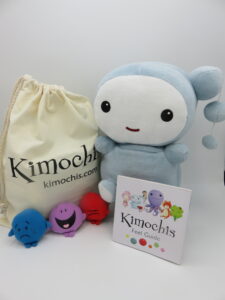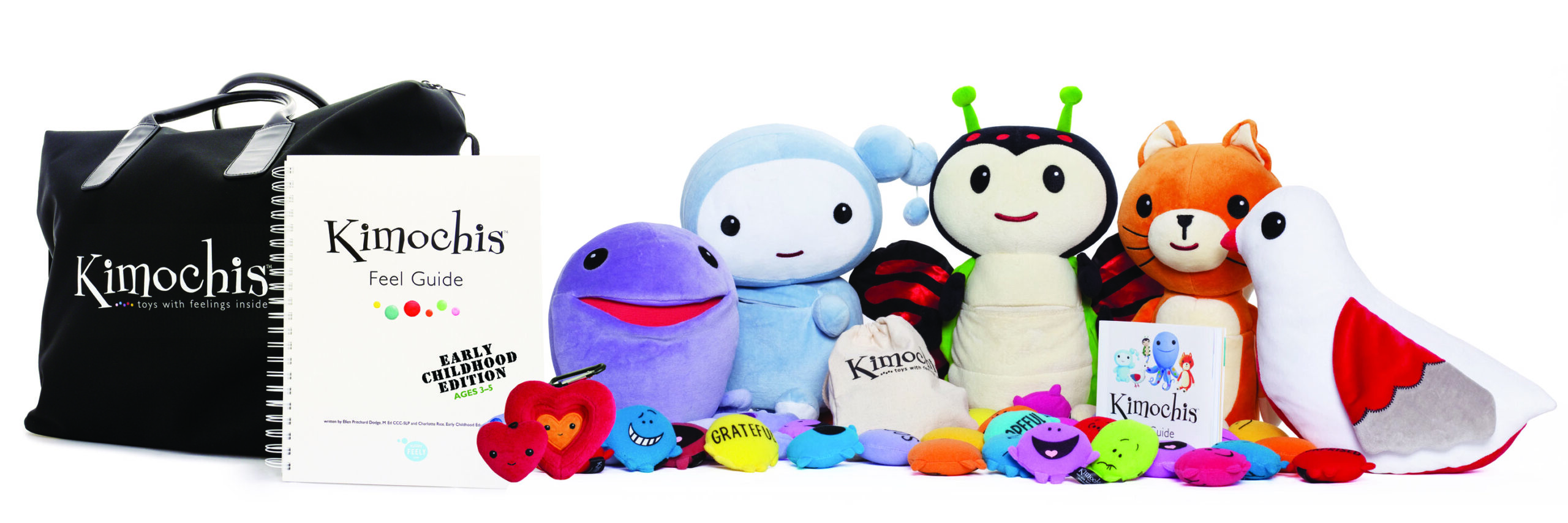It’s tough to be a kid.
As an elementary teacher, you know the absolute truth of that statement. Moreover, you experience firsthand how K–5 life is a cocktail of shifting moods, uncomfortable changes, and misunderstood boundaries. As a youngster, it’s easy to forget kind words in heated moments. Plus, the elementary years also involve dealing with jealousy and circumventing insecurity.
Of course, it’s all too common for these big feelings to blend into a whirlwind that turns a classroom from calm to chaos in a microsecond.
There are a few classroom tools out there that help children navigate heated emotions. But you won’t find too many pedagogical resources that both enhance social–emotional learning and also help students reach academic objectives. Until now, at least. They’re called Kimochis.
At its core, the Kimochis characters and curriculum focuses on developing positive communication that enables young people (and adults) to cultivate lasting, healthy relationships.
What’s more important than that?
What Are Kimochis?
Kimochis are a ragtag cast of characters that show kids all feeling are OK, but all behaviors are not. They’re cute, sure, but they’re also very useful. Named for the Japanese word for “feelings,” these cuddly communication tools empower educators to mitigate challenging behaviors while showing kids how to process strong emotions that are difficult to navigate.

There’s Cloud, who helps teachers and students process unpredictable moods. Then there’s Bug, who shows kids the power of positive self-talk. Meanwhile, Huggtopus communicates the importance of setting limits. Of course, Lovey Dove is there to help kids share pride without bragging while also celebrating others’ accomplishments. And Cat? Cat helps students take re-dos and espouses the virtue of sincere apologies and forgiveness.
Last, there’s Ned Kraft. He’s not a Kimochis character (maybe in spirit, but not in fact). He does run the company, though. We are happy to share our interview with Ned, who shares his insight on how teachers can transform an otherwise hectic classroom into an environment filled with quality communication and transformational learning.
A Conversation with Ned Kraft
What’s the Kimochis’ origin story? Who were these characters created for?
These characters sprang from the mind of Nina Rapporport Rowan, who’s probably best known as the executive producer of the first Despicable Me film. She created Kimochis after the Columbine shooting, with the goal of helping young people express their feelings in a meaningful and productive way. Given how many children connect with storytelling, their original incarnation existed as a media property along the lines of Sesame Street, but the characters eventually evolved into a practical classroom tool.
In the early days, Kimochis featured five core characters that coincided with curriculum for elementary, early childhood, and military families. Of course, the cast has grown in an effort to help kids who are processing complex emotions they may not understand or be able to express in a healthy way. No matter what, we’re always thrilled to see how teachers can use these tools for a near-immediate positive outcome. Kids connect with the characters, then with their teacher, and most importantly with each other.
Your biography mentions you started your career as a mechanical engineer. How did you end up in the world of social–emotional learning?
I started as a Silicon Valley consultant, moving from a mechanical engineer to a tech executive, to a consultant for businesses. When they asked me to assess Kimochis as a company, I was amazed how every single teacher and school district loved the characters, not because they’re adorable so much as they’re an effective teaching tool that creates a kinder, more streamlined, and more productive classroom.
After I presented my ideas on how to improve business operations, they asked me to lead the company. It’s very rare for any product, no matter how good it is, to enjoy such ubiquitous appeal. But before I took over, the product needed to spur an organizational turnaround for schools. What principal has the time and resources to do that? That’s where Kimochis help bridge the gap.
Why is social–emotional learning so paramount?
We live in an emotionally charged world. Elementary students are especially sensitive to this reality, as they’re learning to understand themselves and other people. Needless to say, that’s a very arduous task for a young person whose mind and personhood remains in development mode.
With that in mind, SEL prepares kids for learning. In other words, if there are social–emotional issues in the classroom, students are unable to learn, which negates the mission of education. So, in this way, SEL not only improves the learning environment, but actually makes it possible. Of course, SEL is a loaded term. In the Kimochis world, social–emotional learning means the ability to make and keep friends, work with those with whom you have personality clashes, and create a brighter future as adults.
When it comes to academic standards, teachers face so many evolving and multiplying responsibilities. Given its crucial importance, how can educators make more time for SEL?
Educators don’t need to make time for SEL, not if they have Kimochis in their classroom. Instead of an auxiliary skill, SEL becomes a foundational part of all curricula, and with that streamlined flexibility, teachers don’t have to instill social–emotional mastery all at once. These characters set the foundation for deeper kindness and more impactful communication.
Kindergarten teachers line their classrooms with the alphabet before the kids can read, but that visual reference helps them learn. Kimochis work the same way, a constant reminder of how to treat others and manage big emotions, while understanding that human feelings are a natural and expected thing.
It matters how kids understand and react to those emotions and negative situations like bullying. In this way, they’ll learn an integral mantra that will follow them through their interactions now and in the future. “You can be mad; you can’t be mean.”
The Kimochis website offers a number of free classroom resources. Can you tell us what teachers will find inside that treasure chest?
There are so many no-cost tools and resources on the Kimochis website, too many to list in one interview. I’m quite fond of the Nesting Hearts, which kids exchange with one another to remind students that their peers care about them.
I mentioned earlier how the SEL tools connect with other disciplines. Well, the Feelings Charts integrate with writing and healthy self-expression. These come with flash cards available in thirty-five languages, and they’re available at no charge.
Holding Hope in Hard Times is another one of my favorites. When big emotions bubble up, the exercise allows kids to process and react in a healthy, healing way. These students connect with all these tools. And it doesn’t take an expert to facilitate their use in the classroom.
Be honest. Which character is your favorite and why?
You’re actually the first person to ask me that! It’s Cloud. The character helps mitigate unpredictable moods and regulate words and actions, and as a result, teachers can use Cloud at any point throughout the day, but most practically, he redirects students when emotion-based distractions stifle learning.
Kids follow him anywhere, and so teachers can use him as a sort of Pied Piper who redirects unexpected behaviors and reestablishes focus when interruptions happen. His benefits are so foundational, and kids understand his purpose immediately.






